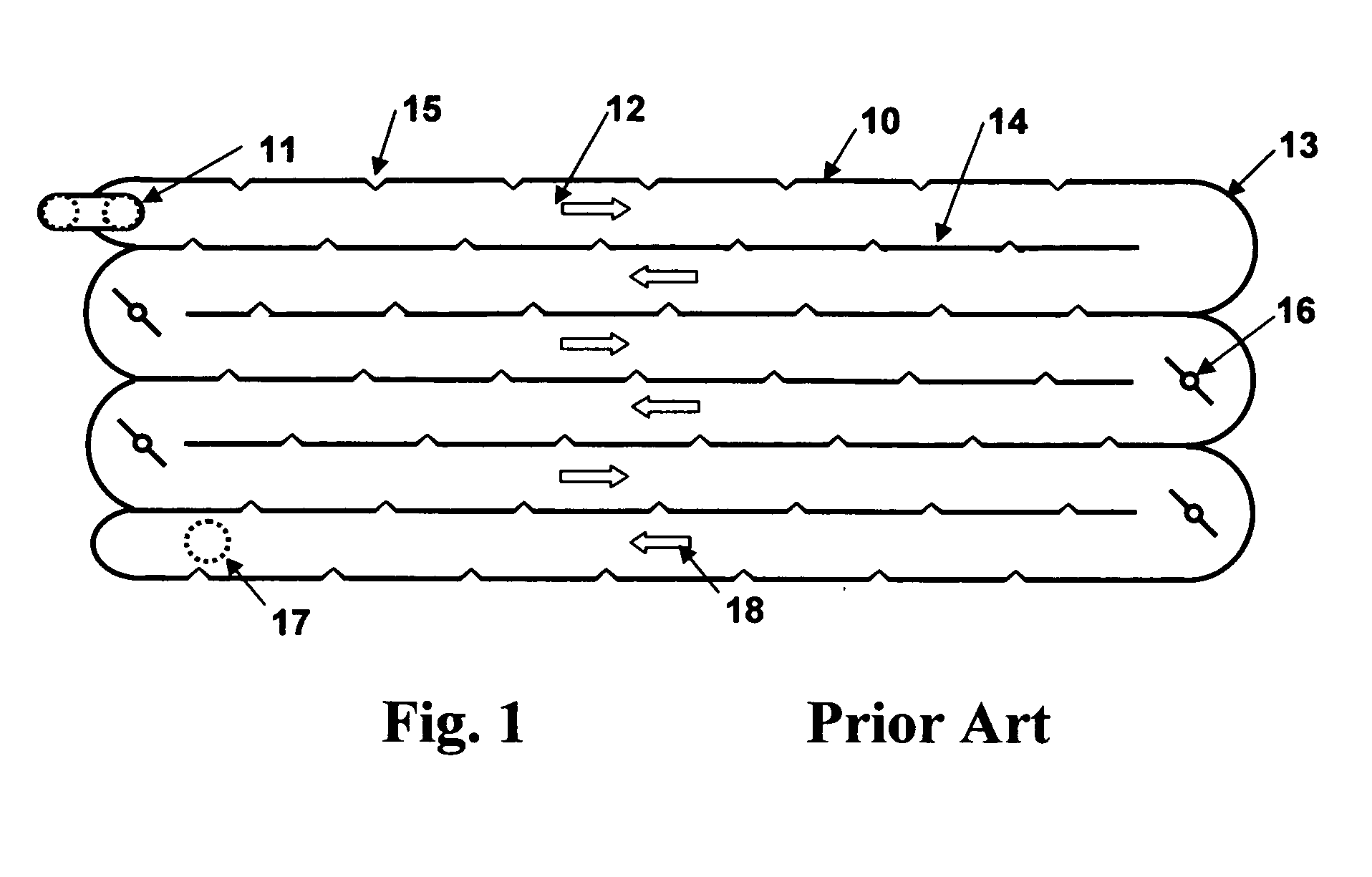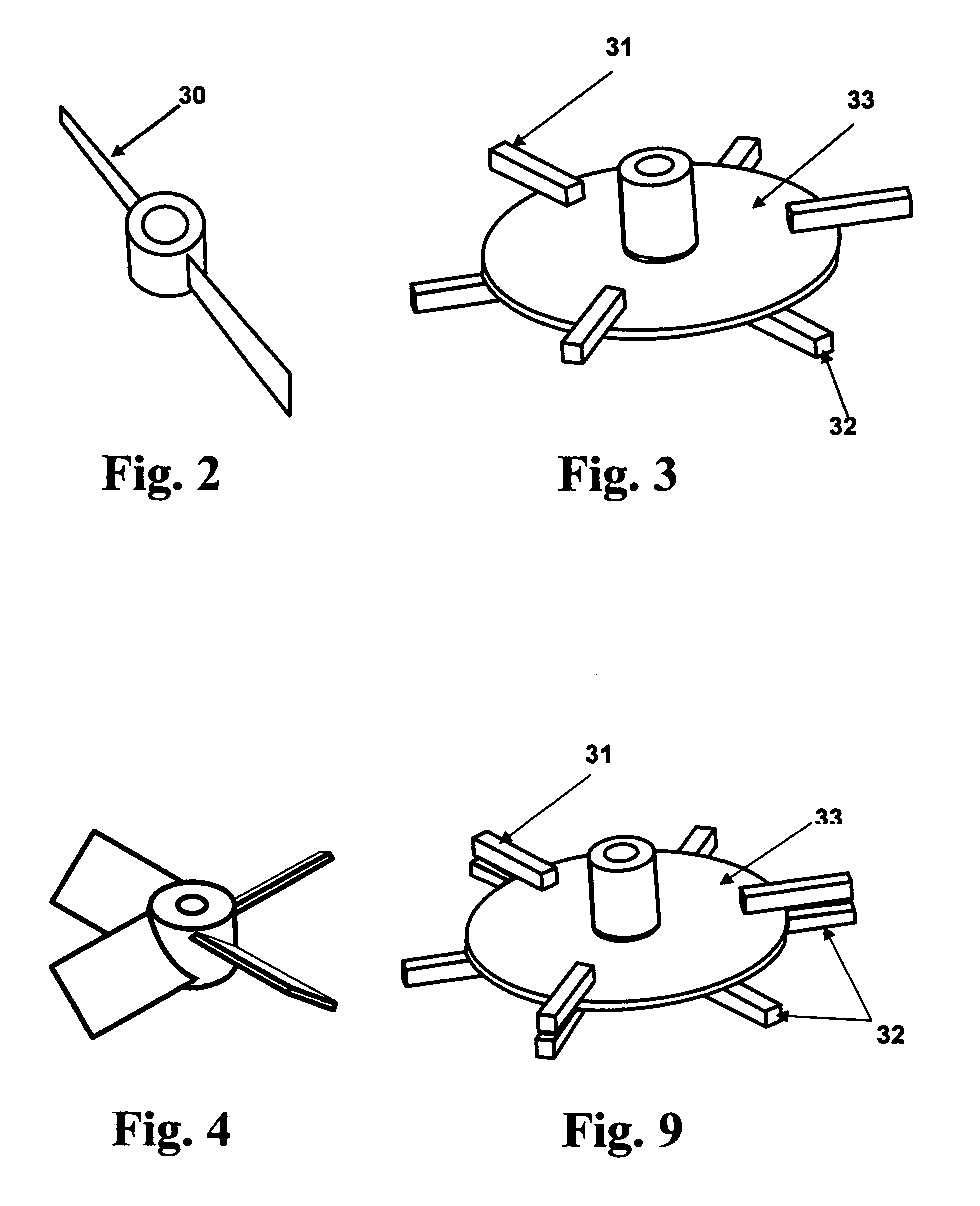Horizontal-flow hydration apparatus
a hydration apparatus and horizontal flow technology, applied in the direction of mixers, rotary stirring mixers, transportation and packaging, etc., can solve the problems of deterioration of pre-mix gels of hydratable polymers, problems such as problems in mixing dry additives (including hydratable polymers) with water or other aqueous fluids, and achieve rapid hydration of polymers, reduce fluid channeling, and eliminate stagnant fluid in compartments
- Summary
- Abstract
- Description
- Claims
- Application Information
AI Technical Summary
Benefits of technology
Problems solved by technology
Method used
Image
Examples
Embodiment Construction
[0049]FIG. 1 illustrates a prior art horizontal-flow hydration tank 10. The tank is mounted on a trailer (not shown) to provide mobility for treating oil and gas wells. On one side of the trailer is a suction manifold leading to a centrifugal pump (not shown) that pumps water from frac tanks to the hydration tank through inlet pipe 11. Polymer powder slurried in diesel or other oil is injected into the water stream just upstream of the centrifugal pump. Turbulence in the pump and in piping between the pump and the hydration tank disperses the polymer slurry into the water stream. Water into which slurried polymer has been dispersed is pumped into the hydration tank through an inlet pipe 11 at the beginning of a long serpentine path through the tank. The hydration tank is divided into seven (7) long flow channels 12 from the top of the tank to the bottom that extend the entire length of the tank. Arrows 18 on the figure indicate the direction of fluid flow along the channels. Semicir...
PUM
| Property | Measurement | Unit |
|---|---|---|
| length | aaaaa | aaaaa |
| length | aaaaa | aaaaa |
| length | aaaaa | aaaaa |
Abstract
Description
Claims
Application Information
 Login to View More
Login to View More - R&D
- Intellectual Property
- Life Sciences
- Materials
- Tech Scout
- Unparalleled Data Quality
- Higher Quality Content
- 60% Fewer Hallucinations
Browse by: Latest US Patents, China's latest patents, Technical Efficacy Thesaurus, Application Domain, Technology Topic, Popular Technical Reports.
© 2025 PatSnap. All rights reserved.Legal|Privacy policy|Modern Slavery Act Transparency Statement|Sitemap|About US| Contact US: help@patsnap.com



